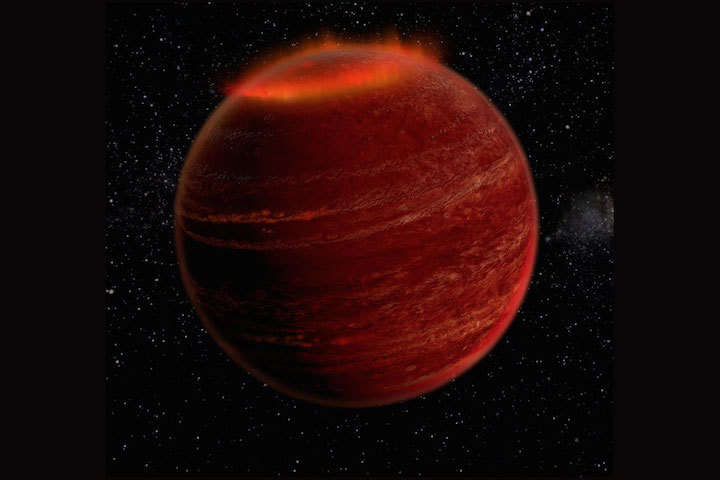.
Brown dwarfs have strong magnetic fields just like real stars

A magnetic disturbance has been directly observed on a brown dwarf for the first time, showing that these objects behave more like stars than planets. They exhibit strong magnetic fields and possibly, like stars, interact with the discs of gas and dust that surround them in their youth.
“We had no clue if they were like small stars or big planets,” says Svetlana Berdyugina at the University of Freiburg in Germany. That’s because brown dwarfs are in a grey area: their mass is between about 10 and 80 times that of Jupiter, but less than one-tenth that of our sun. They aren’t massive enough to fuse hydrogen the way stars do, though they can briefly fuse the hydrogen isotope deuterium just after they form.
Unlike planets, they form from the contraction of gas clouds rather than the accretion of solid matter. They’re dim, but what light they do emit is due to heat from gas pressure that slowly cools over trillions of years, rather than the energy produced by fusion like in stars.
Berdyugina led a team that used spectral data from Keck telescope observations of a brown dwarf 55 times the mass of Jupiter called LSR J1835+3259, about 18.5 light years away. The light was polarised in a way that revealed a local magnetic field even bigger than the strong ones that accompany sunspots.
Berdyugina says this is so strong because brown dwarfs are relatively dense compared to stars. The field could also have been detected because one of the dwarf’s magnetic poles may have been facing roughly in the direction of Earth when it was observed.
Vanishing magnetism
Over the course of two nights, the magnetic disturbance disappeared, but then one appeared on the other side of the brown dwarf. Berdyugina and her colleagues say that probably happened because the disturbance rotated out of and back into view, but they are not certain.
“This measurement confirms some earlier ideas,” says Julien Morin at the University of Montpellier in France. He notes that radio astronomers have seen what seem to be auroras on brown dwarfs, which would require strong magnetic fields.
“But it also brings new puzzles,” he says. “How can a major magnetic region disappear so rapidly?” He notes that previous brown dwarf observations seemed to point to weaker magnetic fields.
If further observations show that the magnetic disturbance comes back at regular intervals, it means we are seeing it as the brown dwarf rotates and it is part of a global field rather than an intermittent phenomenon.
It could also be a sporadic effect of interaction between the brown dwarf, which scientists estimate is only 22 million years old, and an accretion disc.
Still, this magnetic field helps slot brown dwarfs into one category. “Now we can say they really are like small stars,” Berdyugina says.
Quelle: NewScientist
